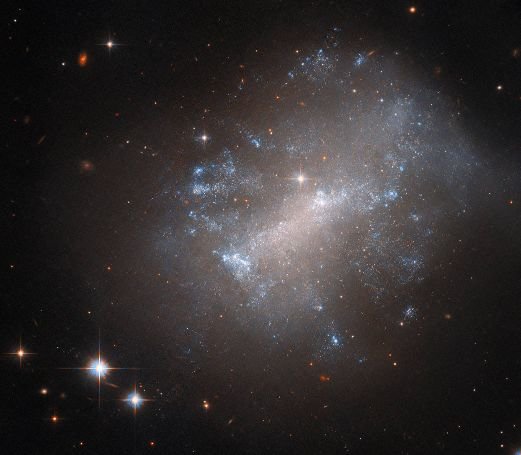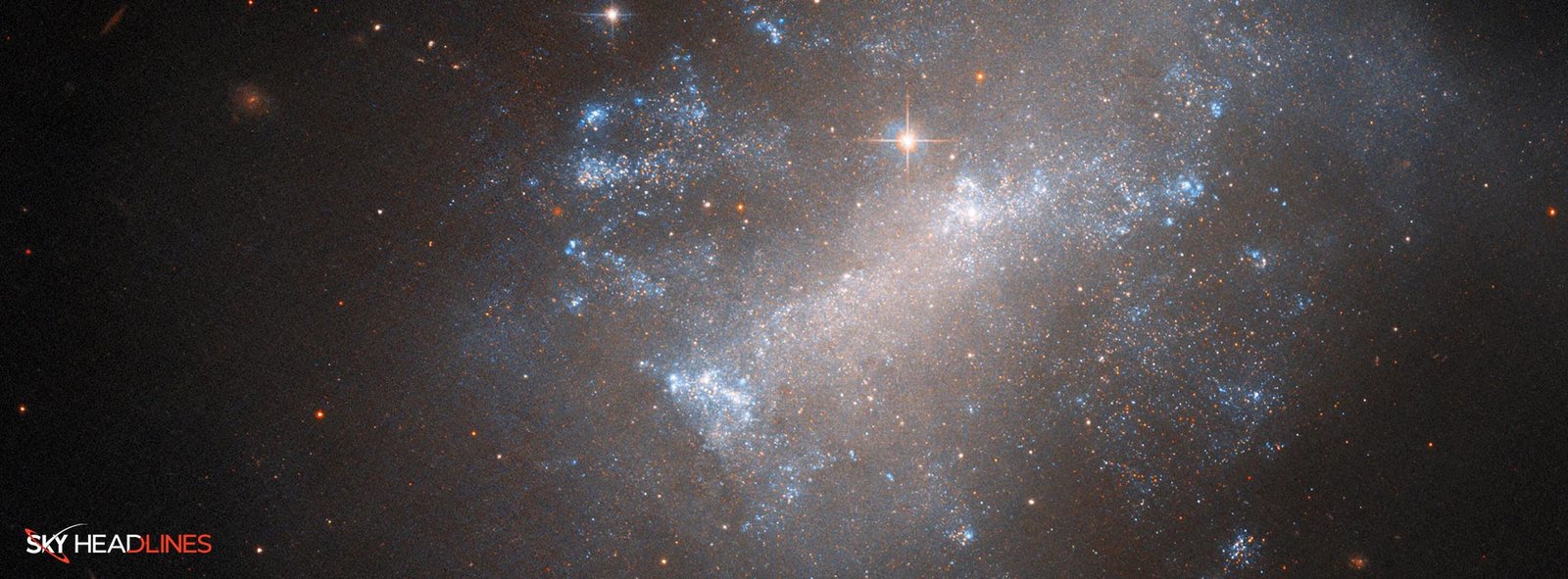News:
Irregular Galaxy Shows the Picture of Vastness of the Nature
The celestial beauty known as NGC 7292, nestled within the frame of this picture, stands as a testament to the vastness of our universe. Unlike its spiral counterparts, NGC 7292 defies convention with its unique morphology.
Its core gracefully extends, forming a distinctive bar-shaped structure that sets it apart.
Moreover, NGC 7292 exudes an intriguing dimness, earning the epithet of a low surface brightness galaxy.
Such galaxies, dominated by interstellar gas and enigmatic dark matter, often play host to stellar mysteries yet to be fully unraveled.

Hubble Captured Irregular Galaxies
Guided by their insatiable thirst for knowledge, astronomers directed the Hubble telescope toward NGC 7292.
This endeavor was part of a comprehensive observational program delving into the aftermath of Type II supernovae to unravel their intriguing diversities.
These cataclysmic events occur when massive stars, having exhausted their nuclear fuel, collapse, only to violently rebound in a brilliant explosion that tears the stellar fabric asunder.
Among the many celestial phenomena that have graced NGC 7292, one event stands out in astronomical annals—SN 1964H. Discovered by keen-eyed scientists in 1964, this supernova is a remarkable milestone in our quest to comprehend the cosmos.
By scrutinizing the surrounding stellar companions of SN 1964H, astrophysicists can glean insights into the star’s magnitude before its cataclysmic demise.
Furthermore, these meticulous observations promise to unveil other remnants of stellar companions that once shared a celestial dance with the progenitor of SN 1964H.
Why is Irregular Galaxy Called So?
Any galaxy that does not easily conform to the categories outlined in the Hubble classification scheme is called an irregular galaxy.
These galaxies lack a distinct shape or structure, and they may have originated from collisions, encounters with other galaxies, or intense internal disturbances.
What are the Main Parts of an Irregular Galaxy?
A disk is present in irregular galaxies, but spiral arms are absent.
Nonetheless, these galaxies exhibit a blend of both mature and youthful stars alongside abundant gas and dust.
How Many Stars Are in Irregular Galaxy?
A disk is present in irregular galaxies, but spiral arms are absent. Nonetheless, these galaxies exhibit a blend of both mature and youthful stars alongside abundant gas and dust.
What is the Best Known Irregular galaxy?
The Large and Small Magellanic Clouds, commonly called LMC and SMC, respectively, are among the most recognizable irregular galaxies.
These galaxies can be seen as compact luminous clouds in the Southern Hemisphere’s night sky, even without the aid of telescopes.
What are irregular galaxies filled with?
Like spiral galaxies, irregular galaxies frequently contain substantial amounts of gas, dust, and numerous vibrant young stars.
Approximately 20% of galaxies nearby are classified as irregular galaxies. On the other hand, quasars are concentrated regions situated at the galaxy’s core, emitting tremendous levels of energy.





